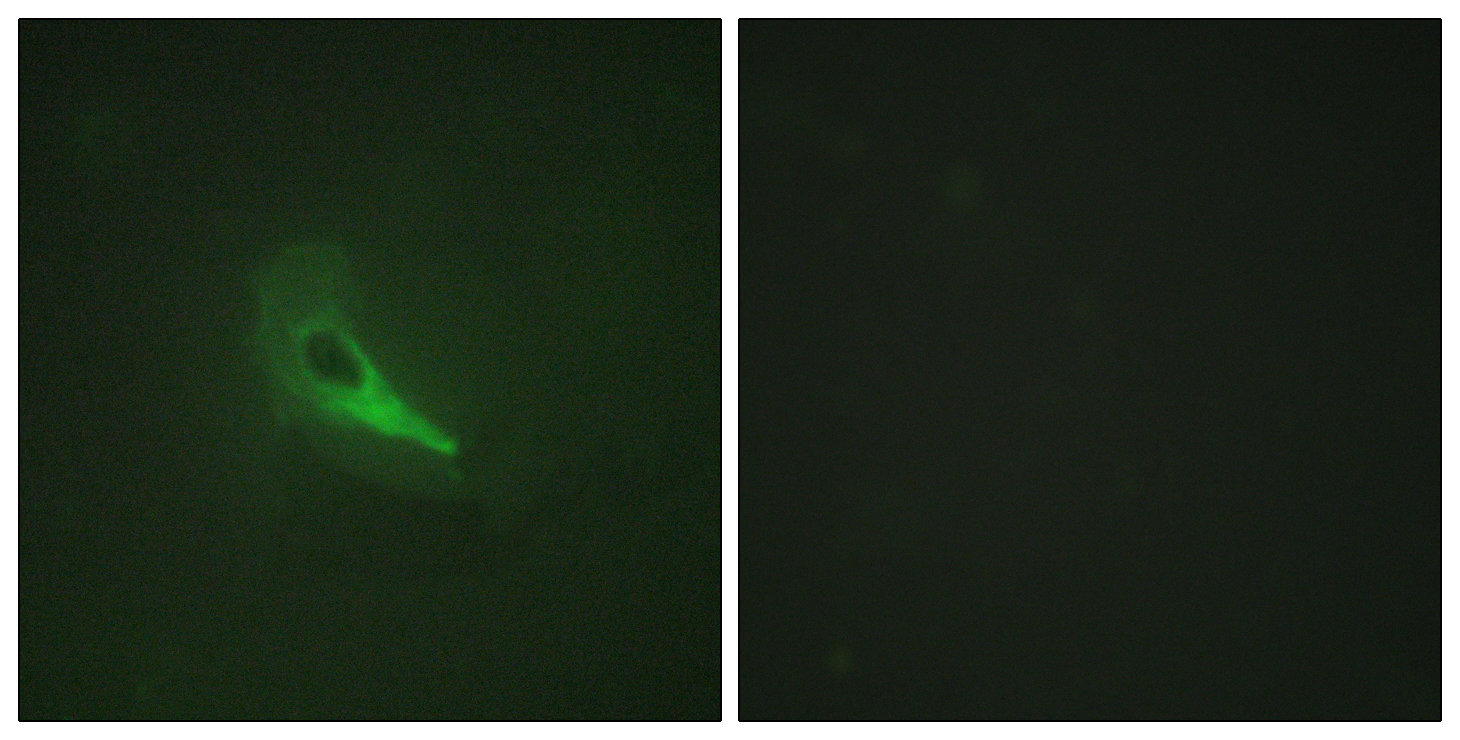AKAP 250 Polyclonal Antibody
- Catalog No.:YT0166
- Applications:IHC;IF;ELISA
- Reactivity:Human;Rat;Mouse;
- Target:
- AKAP 250
- Gene Name:
- AKAP12
- Protein Name:
- A-kinase anchor protein 12
- Human Gene Id:
- 9590
- Human Swiss Prot No:
- Q02952
- Mouse Swiss Prot No:
- Q9WTQ5
- Immunogen:
- The antiserum was produced against synthesized peptide derived from human AKAP12. AA range:301-350
- Specificity:
- AKAP 250 Polyclonal Antibody detects endogenous levels of AKAP 250 protein.
- Formulation:
- Liquid in PBS containing 50% glycerol, 0.5% BSA and 0.02% sodium azide.
- Source:
- Polyclonal, Rabbit,IgG
- Dilution:
- IHC 1:100 - 1:300. IF 1:200 - 1:1000. ELISA: 1:20000. Not yet tested in other applications.
- Purification:
- The antibody was affinity-purified from rabbit antiserum by affinity-chromatography using epitope-specific immunogen.
- Concentration:
- 1 mg/ml
- Storage Stability:
- -15°C to -25°C/1 year(Do not lower than -25°C)
- Other Name:
- AKAP12;AKAP250;A-kinase anchor protein 12;AKAP-12;A-kinase anchor protein 250 kDa;AKAP 250;Gravin;Myasthenia gravis autoantigen
- Molecular Weight(Da):
- 191kD
- Background:
- The A-kinase anchor proteins (AKAPs) are a group of structurally diverse proteins, which have the common function of binding to the regulatory subunit of protein kinase A (PKA) and confining the holoenzyme to discrete locations within the cell. This gene encodes a member of the AKAP family. The encoded protein is expressed in endothelial cells, cultured fibroblasts, and osteosarcoma cells. It associates with protein kinases A and C and phosphatase, and serves as a scaffold protein in signal transduction. This protein and RII PKA colocalize at the cell periphery. This protein is a cell growth-related protein. Antibodies to this protein can be produced by patients with myasthenia gravis. Alternative splicing of this gene results in two transcript variants encoding different isoforms. [provided by RefSeq, Jul 2008],
- Function:
- caution:The sequence shown here is derived from an Ensembl automatic analysis pipeline and should be considered as preliminary data.,disease:Antibodies to the C-terminal of gravin can be produced by patients with myasthenia gravis (MG).,domain:Polybasic regions located between residues 266 and 557 are involved in binding PKC.,function:Anchoring protein that mediates the subcellular compartmentation of protein kinase A (PKA) and protein kinase C (PKC).,induction:Activated by lysophosphatidylcholine (lysoPC).,PTM:Phosphorylated upon DNA damage, probably by ATM or ATR.,similarity:Contains 3 AKAP domains.,subcellular location:May be part of the cortical cytoskeleton.,subunit:Binds to dimeric RII-alpha regulatory subunit of PKC.,tissue specificity:Expressed in endothelial cells, cultured fibroblasts and osteosarcoma, but not in platelets, leukocytes, monocytic cell lines or peripherical blood
- Subcellular Location:
- Cytoplasm, cell cortex . Cytoplasm, cytoskeleton . Membrane ; Lipid-anchor . May be part of the cortical cytoskeleton.
- Expression:
- Expressed in endothelial cells, cultured fibroblasts and osteosarcoma, but not in platelets, leukocytes, monocytic cell lines or peripherical blood cells.
- June 19-2018
- WESTERN IMMUNOBLOTTING PROTOCOL
- June 19-2018
- IMMUNOHISTOCHEMISTRY-PARAFFIN PROTOCOL
- June 19-2018
- IMMUNOFLUORESCENCE PROTOCOL
- September 08-2020
- FLOW-CYTOMEYRT-PROTOCOL
- May 20-2022
- Cell-Based ELISA│解您多样本WB检测之困扰
- July 13-2018
- CELL-BASED-ELISA-PROTOCOL-FOR-ACETYL-PROTEIN
- July 13-2018
- CELL-BASED-ELISA-PROTOCOL-FOR-PHOSPHO-PROTEIN
- July 13-2018
- Antibody-FAQs
- Products Images

- Immunofluorescence analysis of HeLa cells, using AKAP12 Antibody. The picture on the right is blocked with the synthesized peptide.

- Immunohistochemistry analysis of paraffin-embedded human brain tissue, using AKAP12 Antibody. The picture on the right is blocked with the synthesized peptide.



